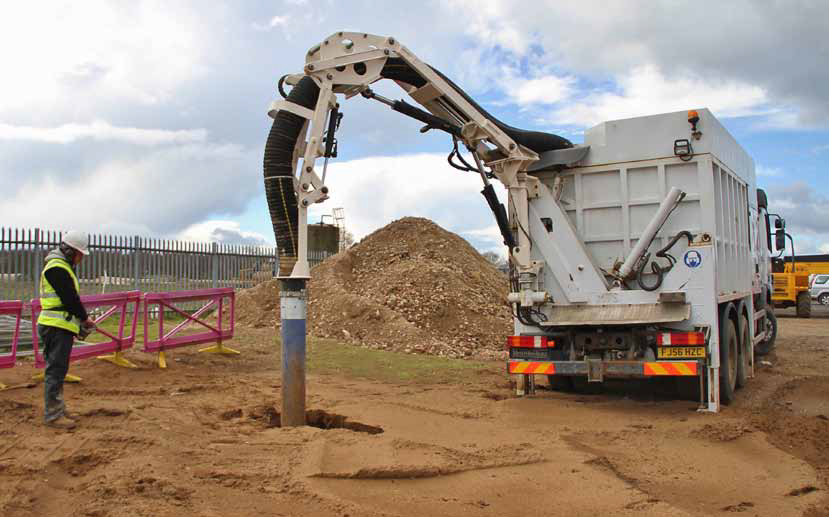In the construction and utility sectors, the demand for safer, more precise excavation methods continues to grow. Traditional digging techniques, while effective in certain environments, often pose significant risks when working near existing underground infrastructure. This is where vacuum excavation has emerged as a game-changing solution. Its non-destructive approach is helping contractors and engineers minimize risk, improve accuracy, and comply with evolving safety and environmental standards.
This guide offers a detailed look at vacuum excavation: what it is, how it works, the types of equipment available, its advantages, key applications, and best practices for field implementation.
What Is Vacuum Excavation?
Vacuum excavation is a technique used to safely expose buried utilities or excavate soil without mechanical digging. It works by using high-powered air or water to loosen soil, which is then suctioned into a vacuum tank. The method is sometimes referred to as “soft digging” due to its low-impact nature, particularly when compared to traditional excavation equipment such as backhoes or trenchers.
There are two primary types of vacuum excavation:
-
Air Vacuum Excavation: Uses compressed air to break up the soil. The resulting dry material is easier to store and reuse.
-
Hydro Vacuum Excavation: Uses pressurized water to break up the soil, making it effective in tougher conditions like clay or frozen ground.
Both methods reduce the likelihood of damaging existing utilities, which makes them ideal for subsurface utility engineering and urban infrastructure projects.
How It Works
The basic process of vacuum excavation involves the following steps:
-
Surface Preparation: The work area is assessed and marked for existing utilities using tools like ground-penetrating radar (GPR) or electromagnetic locators.
-
Loosening the Soil: Depending on the method chosen, either air or water is directed at the ground to loosen the soil without causing damage.
-
Vacuum Removal: The loosened soil is vacuumed into a debris tank, typically mounted on a truck or trailer.
-
Utility Exposure: Once the area is clear, utilities can be inspected, repaired, or replaced as needed.
-
Backfilling and Restoration: The area is filled back in using stored or fresh soil and restored to its original condition.
Benefits of Vacuum Excavation
Contractors and engineers are increasingly turning to vacuum excavation for a number of compelling reasons:
1. Utility Damage Prevention
Perhaps the most significant benefit is its ability to prevent damage to underground utilities. Striking a gas line, electrical cable, or water main can lead to serious injuries, costly delays, and service disruptions. Vacuum excavation provides a safer alternative by allowing utilities to be exposed with precision and care.
2. Enhanced Safety
The method minimizes the need for workers to be inside trenches or operate heavy equipment near sensitive lines. This significantly reduces the risk of trench collapses, equipment-related injuries, and exposure to hazardous materials.
3. Environmental Responsibility
By containing and controlling the removed soil, vacuum excavation helps limit environmental disruption. It reduces dust, runoff, and soil contamination, and makes it easier to manage and dispose of excavated material responsibly.
4. Efficiency and Speed
While traditional methods may be faster in open or unoccupied spaces, vacuum excavation often proves quicker in urban or complex environments due to reduced downtime, fewer damages, and faster cleanup.
5. Precision in Confined Spaces
In tight or congested areas, such as city streets or near existing structures, this technique allows for accurate digging with minimal surface disruption.
Applications of Vacuum Excavation
Vacuum excavation is suitable for a wide range of civil and industrial applications, including:
-
Potholing (Daylighting): Verifying the location of existing utilities before beginning a project.
-
Slot Trenching: Digging narrow trenches for the installation of cables or conduits.
-
Debris Removal: Cleaning out valve boxes, utility vaults, and storm drains.
-
Utility Repair and Replacement: Gaining access to damaged pipes or wires without disturbing surrounding infrastructure.
-
Environmental Projects: Excavating contaminated soil with reduced risk of spreading pollutants.
Choosing the Right Equipment
Contractors and engineers should consider several factors when selecting vacuum excavation equipment:
-
Air vs. Hydro: Depending on soil conditions and project requirements, choose between air-based or water-based systems.
-
Capacity: Larger debris tanks are better for big jobs, while smaller units offer maneuverability in confined areas.
-
Mobility: Trailer-mounted units are ideal for small projects, while truck-mounted systems provide power and storage for larger jobs.
-
Filtration: Advanced filtration systems can handle wet or dry material more efficiently and reduce the risk of clogs.
Some manufacturers also offer combination units capable of switching between air and hydro excavation, providing flexibility across job types.
Best Practices for Vacuum Excavation Projects
To maximize safety, productivity, and regulatory compliance, follow these best practices:
-
Conduct a Utility Locate: Always identify and mark existing underground utilities before beginning work.
-
Use Proper PPE: Workers should wear gloves, safety goggles, ear protection, and other job-specific gear.
-
Train Operators: Only qualified personnel should operate vacuum excavation equipment. Proper training reduces errors and increases safety.
-
Monitor Soil Conditions: Be aware of soil type and moisture content, as these can affect the efficiency of air or hydro excavation.
-
Maintain Equipment: Regular inspection and maintenance of hoses, tanks, and pumps ensure consistent performance and prevent downtime.
-
Document the Process: Keep records of all vacuum excavation activities for compliance and future reference.
Regulatory and Industry Considerations
In many regions, vacuum excavation is not just preferred—it’s required. Regulatory bodies and industry associations like OSHA, ASCE, and Common Ground Alliance recommend or mandate its use in areas with known utility congestion. As liability concerns and public safety priorities increase, this method is quickly becoming the standard across North America and Europe.
Conclusion
Vacuum excavation represents a major step forward in the way contractors and engineers approach underground utility work. It offers unmatched safety, accuracy, and environmental protection—qualities that are increasingly essential in today’s complex urban and industrial environments.









